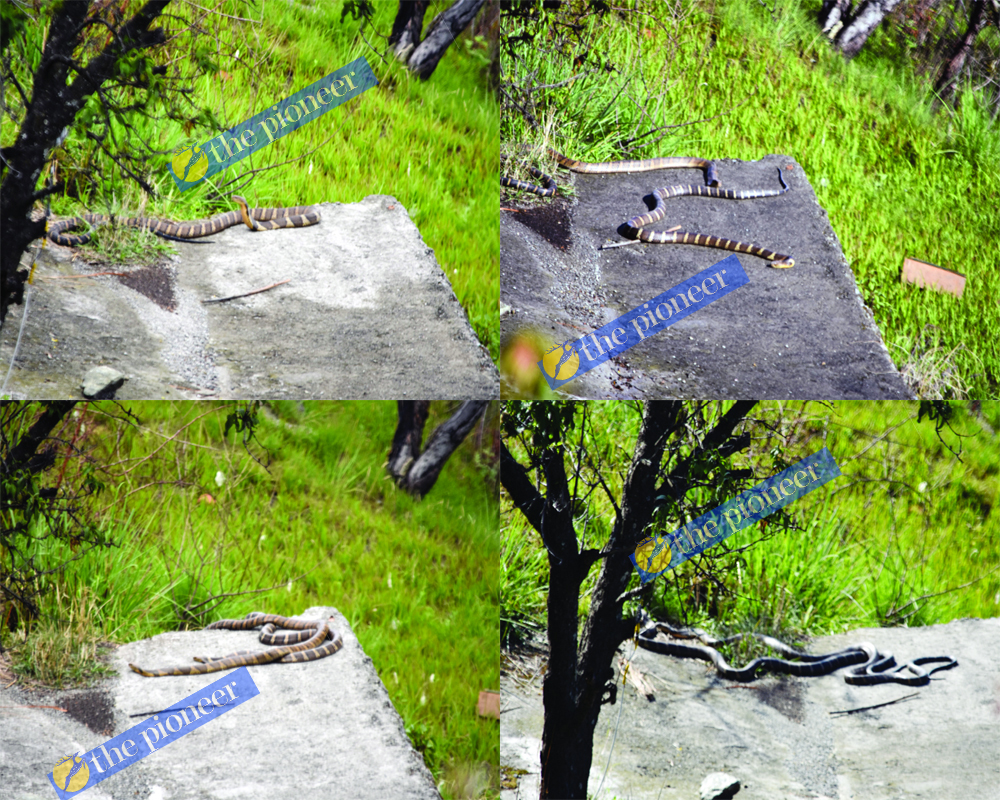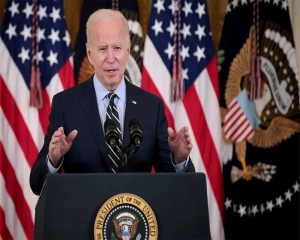In a rare sighting, Hiranmay Karlekar has a chance to observe king cobras romancing intimately on a wide retaining wall of a house below his in the village of Bohrakot, near Ramgarh in Uttarakhand. A first-person account
Excitement rippled through Bohrakot village in Ramgarh in Uttarakhand’s Nainital district on May 14 as the word spread that a local young man had seen a king cobra. The stir was hardly surprising. King cobras are found in many parts of India — ranging from the Western and Eastern Ghat ranges in the south to Uttarakhand and Uttar Pradesh in the north, and Bihar, Odisha, West Bengal in the east, and most north-eastern states. They are, however, extremely shy and stay away from humans, which is why they are not a common sight. Their photographs one sees are mostly from research centres and conservation areas. Those from the open are uncommon.
King cobras are not the most venomous snakes; nor are they the longest. They are, however, the longest venomous snakes, growing mostly between three to four metres in length. In some cases, mainly in Thailand, one has found specimens over five metres long. The longest ever king cobra found measured 5.85 metres. If injected in a person’s bloodstream, their venom can kill in 20 to 30 minutes. Thailand produces an antidote to it; none is available in India. Fortunately, contrary to popular belief, they are generally not aggressive and tend to avoid confrontation of any kind.
As it so happened, the sighting in Bohrakot was on the very wide retaining wall of a house just downhill of ours, which had remained unoccupied for several years. A small crowd of cell-phone photographers and one serious wielder of a camera with a zoom lens, gathered to watch on the next day when two king cobras, a male and a female, were seen sunning themselves at the same place. Sensing the crowd’s presence, they disappeared in one of the deep crevices in the wall, which they seemed to have made their temporary home. Realising that I could get the chance of a lifetime, I got my camera ready, as my wife, Malavika, contacted Jignasu Dolia, a noted herpetologist we know well.
Jignasu, who specialises in studying king cobras, is currently working on two projects. One of them, under a grant from Britain’s Rufford Foundation (his second one from them), relates to the distribution and nesting ecology of king cobras and the threats facing them. The other one is about human-snake conflict mitigation principally in Uttarakhand’s Terai area and the Nainital Forest Division. It has been undertaken under the Government of India’s National Mission on Himalayan Studies. Its principal investigator is Tejaswini Patil, Chief Conservator of Forests, Kumaon. Jignasu has also been training Uttarakhand’s forest department personnel on proper methods of snake rescue and spreading awareness about the ways of snakes in the region for over a decade.
Jignasu arrived on May 15 with his camera and an assortment of other equipment. As he was surveying the scene, he ran into a neighbour who said that it was his land, and that he wanted the snakes removed because his children, who came to play into the area, could be in danger, as could be his domestic animals. His concern was understandable but his demand echoed the commonplace approach of most people towards snakes based on the blanket belief that all of them were venomous, aggressive and best removed from one’s premises. The fact is, most snakes are not venomous and, as said earlier, king cobras are usually not aggressive. In fact, they inject venom in their bites only when they consider necessary. The rest are “dry bites” which do no more than cause pain and, even before resorting to these, they often raise their heads, spreading out their hoods, and rising erect from the ground, which can be up to a height of one-third of their lengths, to frighten their perceived enemies off.
Jignasu thought that the best way to deal with the situation was to involve Uttarakhand’s forest department. He got in touch with Tejaswini Patil, as well as Sanjiv Chaturvedi, Chief Conservator of Forests, Research, Uttarakhand. Known for their uprightness and competence, both sprang into action. A forest department contingent arrived on May 17. It was explained to the neighbour that the king cobra was India’s national reptile. It was a protected species included in Schedule II (Part II) of the Wildlife (Protection) Act of India, 1972. Its illegal capture and killing were non-bailable offenses punishable with imprisonment and/or fine.
His recalcitrance vanished. The forest department got into the act setting up a CCTV system with three cameras and a monitor screen to keep a watch not only on the two king cobras but also trap on the recorder anyone coming to harm them or otherwise. As for Malavika and I, we could watch them on the surface of the wall from our property. I had a field day with my camera, which I had fitted with a 55-300 mm zoom. While I clicked many shots of their being together as well as alone, the prize harvest was the ones showing them romancing intimately, which, I was told, was a very, very rare sight. We, however, did not see them mating.
Jignasu saw them leaving on the 22nd morning. Later, I saw them leaving on the CCTV’s monitor screen and wondered whether they mated without our seeing it. And, as is normally the case, had they gone their own respective ways thereafter? He to his individual existence, and she to build a nest and lay eggs in a deep forest? Female king cobras are the only snakes that build their nests overground and guard them against predators. They either leave a few weeks after building them or stay around for two months or more, leaving just a few days before the eggs hatch. In neither case do they leave the nests even to eat.
Or had they left because of stalking by a local cat which, darting from a nearby bush, struck the male once with one of its paws, and retreated instantaneously as the female raised her head threateningly? Or were they disturbed by the arrival of workers to live in a nearby servants’ quarters?
There is no knowing. Whatever the cause, they have left behind memories of two incidents that reflect much about their species. First, they never killed the cat, which either of them could easily have done, There was plenty of time for that as the cat, after the encounter on the retaining wall’s top, hung around in the bushes for around 15 minutes, weighing its options. Second, the loving tenderness they displayed towards each other before parting, was deeply moving, with the most touching act being that of the male placing his head on her body gently and with obvious emotion. He clearly did not want her to go, and, when she did, raised his head and watched her journey, before slowly following in the same direction.
I was worried — not only for them but their species. The International Union for the Conservation of Nature (IUCN) has put the latter on its “vulnerable” list for the many threats their survival faces. Forests, in which they live, are shrinking because of invading human settlements, and infrastructure like roads — which disturb and cut across their territories — they bring in their wake. Instances of snakes and hatchlings, that have been run over and killed, are growing. Besides, the increasing number of dams are causing deforestation, as is illegal felling of trees for timber. Climate change contributes by altering the weather of their habitats and conducing to the growing number of forest fires, which destroy their territories, and, perhaps kill them as well.
It is an increasingly hostile world that faces snakes and all non-human living beings, thanks to the activities of Homo sapiens, the worst of all predators, who themselves face extinction because of their ruthless exploitation of nature — including plants, animals, and the earth’s surface — and the generation and use of energy that pollutes the atmosphere.
Meanwhile, I will miss the romancing two who left. I wish I could give the snake call that Mowgli did in Rudyard Kipling’s Jungle Book and say, like him, “We be of one blood, ye and I.” Alas, life does not take after fiction. So, good bye, royal reptiles! May peace and happiness travel with you.
The writer is Consulting Editor, The Pioneer.
All rights reserved. No part of the text of this article and pictures used can be published or reproduced in any other form without the permission of the author.


























